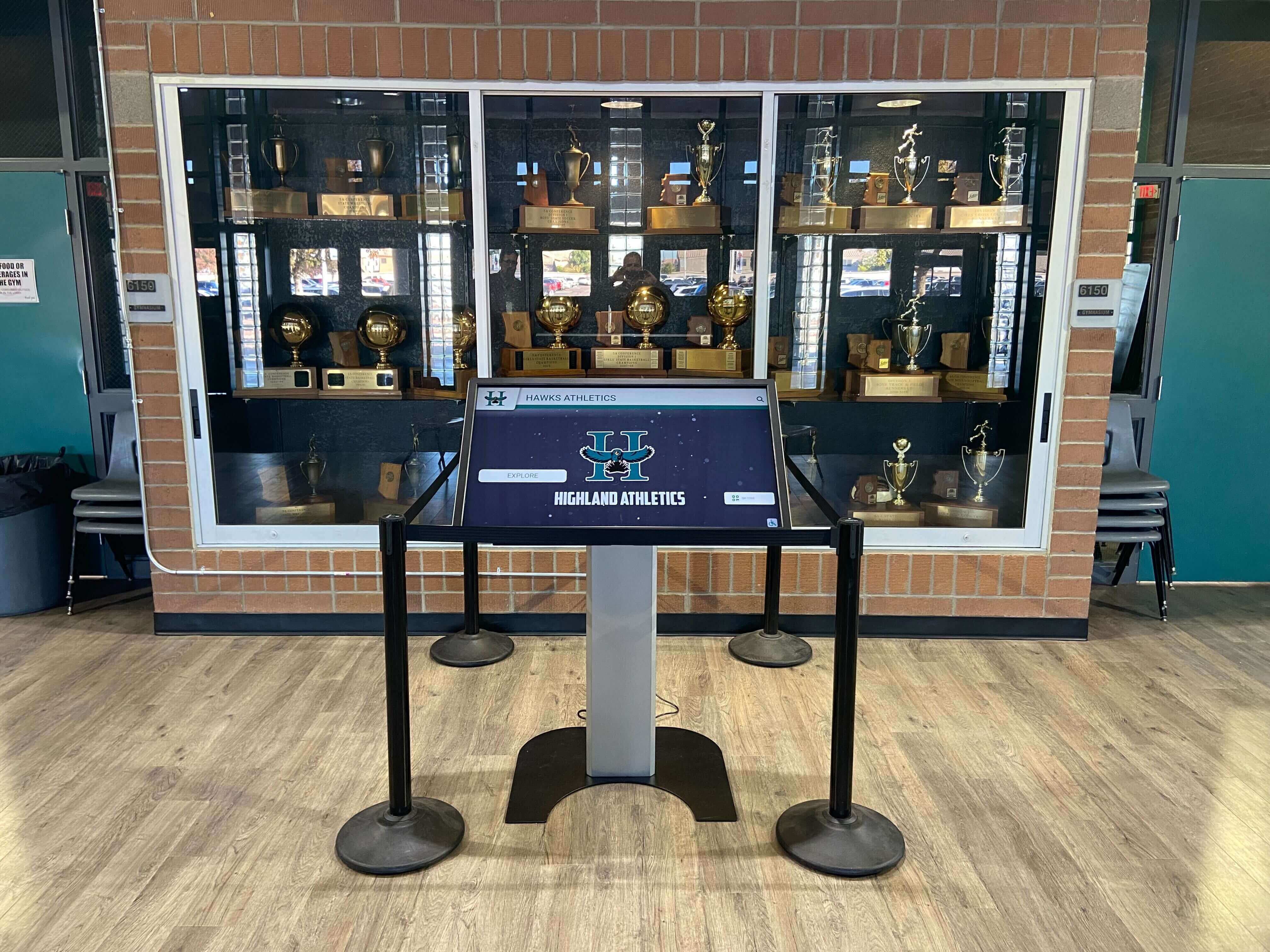Educational institutions, civic organizations, and community groups increasingly recognize the power of creating new halls of honor to celebrate achievement, preserve legacy, and inspire excellence. Whether you’re a school administrator considering your first recognition program, a community leader looking to honor local heroes, or an organization ready to formalize achievement recognition, establishing a new hall of honor represents a meaningful investment in culture, tradition, and connection.
This comprehensive guide explores everything you need to know about creating a new hall of honor—from understanding what distinguishes halls of honor from other recognition formats through establishing selection criteria, choosing display approaches, developing compelling content, and ensuring long-term program success.
Understanding Halls of Honor: Purpose and Distinction
Before launching a new hall of honor, it’s important to understand what makes this recognition format unique and how it differs from related approaches like halls of fame or other achievement displays.
What is a Hall of Honor?
A hall of honor is a dedicated recognition program and display celebrating individuals or groups who have demonstrated exceptional achievement, character, service, or contributions aligned with an organization’s values and mission. Unlike more narrowly focused recognition programs, halls of honor typically encompass multiple dimensions of excellence rather than single achievement categories.
Core Characteristics of Halls of Honor:
- Values-Centered Recognition: Emphasis on how achievements reflect organizational values and ideals
- Comprehensive Excellence: Recognition of multiple achievement types including service, character, leadership, and accomplishment
- Community Focus: Celebration of contributions that strengthened communities, organizations, or causes beyond individual success
- Inspirational Purpose: Explicit goal of inspiring others to pursue similar excellence and embody shared values

Hall of Honor vs. Hall of Fame: Key Differences
While often used interchangeably, halls of honor and halls of fame have subtle but meaningful distinctions:
Hall of Fame Characteristics:
- Primarily achievement and performance-focused
- Often sport-specific or field-specific recognition
- Emphasis on competitive excellence and statistical accomplishment
- Typically honors “the best” in a particular domain
Hall of Honor Characteristics:
- Values and character-focused alongside achievement
- Broader definition of excellence across multiple domains
- Emphasis on service, integrity, and embodiment of ideals
- Honors those who exemplify organizational principles
Many institutions find that halls of honor better serve comprehensive recognition goals by acknowledging diverse forms of excellence rather than narrowly defined competitive achievement. Understanding creating an alumni hall of fame provides additional context for planning recognition programs.
Common Hall of Honor Applications
Different organizations implement halls of honor for various purposes:
Educational Institutions Schools, colleges, and universities create halls of honor recognizing distinguished alumni, exceptional students, dedicated faculty, or community supporters who embodied institutional values while achieving remarkable success.
Military and Veteran Organizations Military halls of honor celebrate service members who demonstrated extraordinary courage, leadership, or sacrifice, preserving stories of heroism and dedication for future generations.
Civic and Community Organizations Chambers of commerce, community foundations, and civic groups establish halls of honor recognizing citizens who strengthened communities through service, leadership, or significant contributions to local quality of life.
Professional and Trade Associations Industry organizations create halls of honor celebrating members who advanced their professions through innovation, ethical leadership, mentorship, or sustained excellence.
Religious Institutions Churches, synagogues, and faith communities implement halls of honor recognizing members who exemplified spiritual values through service, stewardship, or ministry leadership.

Planning Your New Hall of Honor: Essential First Steps
Successful hall of honor programs begin with thorough planning that addresses foundational questions about purpose, scope, and operational structure.
Step 1: Defining Your Program’s Purpose and Objectives
Clear purpose statements guide all subsequent decisions about criteria, display format, and program management. Consider what you want your hall of honor to accomplish:
Primary Objectives to Consider:
Recognition and Gratitude Do you primarily want to honor individuals’ accomplishments and contributions while expressing organizational appreciation for how they represented your values and mission?
Inspiration and Motivation Is your main goal inspiring current members, students, or participants through tangible examples of excellence they can aspire to emulate?
Fundraising and Donor Cultivation Are you focused on strengthening donor relationships by recognizing supporters’ contributions and creating additional recognition opportunities that encourage philanthropic engagement?
Historical Documentation Do you aim to preserve organizational history and important stories that might otherwise be lost as time passes and collective memory fades?
Community Building Are you trying to strengthen connections among members by celebrating shared values and creating common ground across different eras or constituencies?
Most effective programs address multiple objectives simultaneously, but clarifying priorities helps resolve difficult decisions when trade-offs arise during implementation.
Step 2: Establishing Selection Criteria
Transparent, well-defined criteria ensure program credibility and fairness while making recognition decisions more objective and defensible.
Key Criteria Categories:
Achievement and Accomplishment Professional distinction, competitive success, creative excellence, or significant accomplishments in chosen fields demonstrating exceptional capability and sustained excellence.
Character and Values Demonstration Integrity in professional and personal conduct, ethical leadership throughout career, embodiment of organizational values in decision-making, and positive role modeling that inspires others.
Service and Contribution Significant service to organization or community, volunteer leadership on important initiatives, mentorship supporting others’ success, or advocacy advancing important causes aligned with organizational mission.
Impact and Legacy Lasting positive influence on organization or field, contributions that created enduring value, innovations that advanced practices or knowledge, or leadership that strengthened institutions and communities.
Specialized Categories Consider whether to include specific recognition tracks such as lifetime achievement for sustained excellence, young achiever awards for exceptional early-career impact, humanitarian recognition for service-focused contributions, or innovation awards for creative advancement.
Balanced criteria ensure halls of honor recognize diverse forms of excellence rather than narrowly defined achievement, making recognition accessible and meaningful across different paths to distinction.

Step 3: Designing the Nomination and Selection Process
Structured processes maintain program integrity while ensuring comprehensive consideration of deserving candidates:
Nomination Period and Sources Establish annual nomination cycles with clearly communicated windows. Determine who can nominate: organizational members, community stakeholders, committee members, or self-nominations. Broader nomination sources increase candidate diversity while potentially requiring more committee review time.
Required Documentation Create comprehensive nomination forms requesting detailed biographical information, specific achievement descriptions with supporting evidence, narrative statements explaining why nominees merit recognition, reference contact information, and high-quality photos for display inclusion.
Thorough documentation enables informed committee decisions while gathering content needed for recognition displays when candidates are selected.
Selection Committee Composition Form diverse committees including organizational leadership, relevant subject matter experts, community representatives, and potentially those previously honored. Staggered multi-year terms ensure continuity while regularly refreshing perspectives. Typical committee sizes range from 7-15 members, balancing diverse viewpoints with productive deliberation.
Evaluation and Voting Procedures Implement structured review processes where committee members independently evaluate nominations before meetings, discuss nominees’ merits during deliberations, and vote through defined procedures such as ranking systems, majority requirements, or elimination rounds. Document decision rationales to maintain institutional memory and ensure consistency across years.
Notification and Acceptance Contact selected honorees to inform them of recognition, request participation in content development, invite them to induction ceremonies, and confirm acceptance. Most nominees enthusiastically accept, though some may decline for personal or professional reasons.
Choosing Your Hall of Honor Display Format
Halls of honor can be implemented through traditional physical displays, modern digital interactive systems, online platforms, or hybrid approaches combining multiple elements.
Traditional Physical Display Options
Physical recognition creates permanent, tangible presence that many organizations and honorees value:
Engraved Plaques and Nameplates Classic brass, bronze, or wooden plaques mounted on dedicated walls provide formal, timeless recognition. Individual plaques create impressive visual impact when arranged in organized patterns that grow over time. Traditional plaques work well for organizations valuing permanence and classic aesthetics, though space constraints eventually limit expansion and updates require expensive replacement plaques.
Photo Display Boards Framed photographs with accompanying biographical text create more personal connections than simple nameplates. Visitors relate more strongly when seeing honorees’ faces alongside achievement narratives. Photo boards require consistent photography quality and styling while facing similar space limitations as plaque installations.
Display Cases and Exhibits Three-dimensional cases showcase awards, memorabilia, documents, and artifacts alongside recognition plaques. These installations work particularly well when physical objects meaningfully tell achievement stories and add depth to recognition displays.

Digital Interactive Recognition Systems
Modern technology transforms hall of honor possibilities, enabling organizations to overcome traditional limitations while adding powerful new capabilities:
Touchscreen Interactive Displays Interactive touchscreen systems allow visitors to actively explore achievements through intuitive interfaces. Users search by name, achievement category, era, or keyword, quickly finding specific individuals or discovering interesting honorees. These systems accommodate unlimited profiles without space constraints—whether recognizing 50 honorees or 5,000, the display footprint remains constant.
Key Advantages of Digital Systems:
- Unlimited Recognition Capacity: Add new honorees annually without space concerns or expansion costs
- Multimedia Storytelling: Include photos, videos, audio recordings, documents, and interactive timelines that create rich narratives impossible with static displays
- Easy Content Updates: Change information instantly as honorees achieve new milestones or provide updated biographical details
- Powerful Search Features: Enable visitors to find specific people, achievements, or categories quickly without browsing entire displays
- Remote Accessibility: Extend recognition beyond physical locations through online platforms visitors access anywhere
- Engagement Analytics: Track which content generates most interest to optimize display effectiveness
Solutions like Rocket Alumni Solutions specialize in recognition technology for educational institutions and organizations, providing purpose-built platforms that remain intuitive enough for non-technical staff to manage independently.
Web-Based Recognition Platforms Online hall of honor websites extend recognition globally, allowing community members anywhere to explore achievements. Web platforms integrate seamlessly with social media, allowing one-click sharing that exponentially extends recognition reach and facilitates reconnection among honorees and community members.
Hybrid Approaches
Many organizations find that combining traditional and digital elements creates the most effective recognition experience. A hybrid approach might include traditional engraved walls listing all honorees, complemented by nearby interactive digital displays offering detailed profiles, multimedia content, and searchable databases.
This combination preserves the gravitas and permanence that traditional displays provide while adding engagement capabilities and flexibility that digital technology enables—often satisfying stakeholders with different preferences and priorities.

Budgeting and Funding Your New Hall of Honor
Realistic financial planning prevents underinvestment that undermines impact or budget overruns that threaten program sustainability.
Understanding Implementation Costs
Traditional Physical Displays Initial investments typically range $5,000-$30,000 depending on materials quality (brass, bronze, wood, acrylic finishes), customization level and design complexity, number of initial honorees recognized, professional fabrication and installation services, and location-specific construction or mounting requirements.
Ongoing costs include $150-$500 per new inductee for nameplate manufacturing and installation as programs grow annually.
Digital Interactive Systems Initial implementation typically ranges $15,000-$50,000 including commercial-grade touchscreen hardware (typically 43"-65" displays), professional mounting and installation services, software platform licensing and setup, initial content development and profile loading, network connectivity infrastructure, and training and technical support services.
Annual operating expenses include software subscriptions ($1,500-$3,000), content updates and management (staff time), routine maintenance and cleaning (minimal for quality systems), and periodic technology refreshes every 5-7 years as hardware ages.
Hybrid Implementations Combining traditional and digital elements typically requires budgets in the $25,000-$60,000 range depending on the scope and scale of each component.
Developing Funding Strategies
Most organizations fund hall of honor programs through multiple sources rather than single budget allocations:
Institutional Budget Allocations Annual operating budgets, foundation or endowment funds, capital improvement allocations, or shared funding across multiple departments benefiting from recognition displays.
Dedicated Fundraising Campaigns Special campaigns specifically funding hall of honor establishment, appeals tied to anniversaries or milestone celebrations, or crowdfunding campaigns among broader constituencies eager to support recognition initiatives.
Corporate and Individual Sponsorships Business sponsorships from companies founded by honorees, individual major donor naming opportunities for displays or programs, or multi-year sustaining sponsorships covering ongoing operational costs.
Endowment Funding Establishing permanent endowments generating ongoing income supporting hall of honor operations, updates, and induction ceremonies in perpetuity.
Consider framing hall of honor funding as strategic investment in organizational culture and community engagement that generates measurable returns through strengthened connections, enhanced reputation, and increased philanthropic support over time.
Creating Compelling Content for Your Hall of Honor
Effective recognition requires more than listing names and dates—compelling content creates emotional connections that engage visitors and appropriately honor inductees.
Essential Profile Information
Comprehensive honoree profiles typically incorporate several key elements that tell complete stories rather than listing bare facts:
Biographical Foundation
- Full name and any relevant titles
- Dates of affiliation or service with organization
- Educational background and credentials
- Career path and professional accomplishments
- Community involvement and volunteer leadership
Achievement Highlights
- Specific accomplishments meriting recognition
- Awards, honors, and professional distinctions
- Innovations or contributions advancing fields
- Leadership roles demonstrating influence
- Quantifiable impact where appropriate
Values and Character
- How honoree embodied organizational values
- Ethical leadership examples or stories
- Mentorship and support of others’ success
- Challenges overcome with integrity
- Role modeling that inspired community members
Personal Reflections
- Honoree’s perspective on recognition significance
- Meaningful experiences with organization
- Advice or inspiration for others
- Personal connection to organizational mission
- Gratitude expressions for support received

Writing Engaging Narratives
Move beyond bullet-point listings to craft narratives that bring honorees to life:
Focus on Journey and Story Rather than simply cataloging achievements, describe the journey that led to distinction. What challenges were overcome? What pivotal moments shaped the path? How did the honoree’s relationship with your organization influence their success? Narrative arcs create more engaging content than chronological resume summaries.
Include Specific, Memorable Details Specific examples resonate more powerfully than general descriptions. “Led initiative that provided meals to 10,000 families during crisis” tells a more compelling story than “Community service leader.” Concrete details make achievements tangible and memorable.
Connect to Organizational Values Explicitly tie individual recognition to broader organizational principles and culture. “Exemplified our commitment to integrity by…” or “Embodied our mission of service through…” helps visitors understand what the organization values most and why particular individuals merit honor.
Use Active Voice and Vivid Language Strong verbs and descriptive language create energy: “Pioneered groundbreaking research,” “Championed underserved communities,” “Transformed organizational culture.” Passive constructions and generic descriptors diminish impact.
Effective storytelling through digital recognition creates emotional connections that inspire visitors and honor inductees appropriately.
Incorporating Multimedia Content
Digital displays enable rich multimedia storytelling that static boards cannot match:
Video Content Interview clips with honorees discussing their experiences, accomplishments, and values create authentic personal connections. Historical footage showing honored individuals in action brings stories to life. Testimonials from colleagues, students, or community members provide additional perspectives on impact.
Photo Galleries Multiple photographs showing honorees throughout their careers or lives visualize growth, progression, and the scope of contributions. Include both formal professional portraits and candid images showing honorees engaged in meaningful work or service.
Audio Recordings For historical figures, audio clips preserve voices and speaking styles. For contemporary honorees, recorded reflections, speeches, or interviews add personal dimensions that text alone cannot capture.
Document Archives Scanned letters, awards, certificates, newspaper articles, or other documents provide primary source evidence while adding visual interest and historical authenticity to profiles.
Implementing and Launching Your Hall of Honor
Moving from planning to reality requires systematic execution addressing both practical implementation and program launch strategies.
Content Development Phase
Selecting Inaugural Honorees Begin with a manageable inaugural class—typically 15-50 individuals depending on organizational size and history. Ensure diverse representation across achievement categories, time periods spanning organizational history, demographic characteristics reflecting community diversity, and geographic distribution when relevant.
Balance historical recognition of legendary figures with contemporary honorees whom current members may know or relate to more directly.
Gathering Information and Materials Systematically collect content through direct outreach to living honorees with questionnaires and interview requests, archival research for historical figures, contact with family members or colleagues of deceased individuals, review of organizational records and publications, and social media research for publicly available biographical information.
Information gathering often proves the most time-intensive implementation phase. Starting early and maintaining organized systems prevents delays and ensures comprehensive profile development.
Creating and Editing Profiles Write engaging biographical narratives following established format guidelines, edit and optimize photos and multimedia for display specifications, gather supporting content enriching basic profiles, conduct thorough fact-checking ensuring accuracy, and obtain necessary permissions for photos and personal information use.
Implement editorial review processes ensuring consistent quality, appropriate tone, proper grammar and style, factual verification, and respectful presentation across all profiles regardless of when honorees were inducted.

Technical Implementation (For Digital Systems)
Platform Selection Evaluate solutions providers considering functionality meeting your requirements, budget alignment with allocated funds, technical support quality and responsiveness, integration capabilities with existing systems, customization options matching organizational needs, and long-term provider viability and development roadmap.
Working with recognition specialists streamlines implementation through proven platforms, experienced installation support, best practice guidance based on similar organizations, and ongoing technical assistance maintaining system performance.
Hardware Installation and Setup Select appropriate display sizes for viewing distances and available space, choose mounting approaches including wall-mounted displays, freestanding kiosks, or custom architectural integration, ensure reliable network connectivity through Wi-Fi or ethernet, install commercial-grade touchscreens or monitors with appropriate warranties, and conduct thorough functionality testing before launch.
Professional installation ensures displays function reliably while presenting polished appearances that appropriately honor recognized individuals and reflect well on sponsoring organizations.
Software Configuration and Training Set up content management systems with organizational branding and visual identity, import initial honoree profiles and media assets, configure search and navigation features for intuitive use, test thoroughly on various scenarios and user interactions, and train administrative staff on content updates and system management.
Adequate training ensures organizational staff can confidently manage systems independently while understanding when to contact support for specialized assistance or troubleshooting.
Launch Events and Promotion
Planning Induction Ceremonies Create memorable inaugural events celebrating initial honorees with formal programs recognizing each individual, speeches from organizational leaders and distinguished honorees, display unveiling ceremonies building anticipation, receptions allowing attendees to interact with honorees, and media coverage amplifying recognition reach beyond attendees.
Induction ceremonies establish hall of honor significance while creating positive experiences that honored individuals remember and share within their networks—strengthening program reputation and encouraging future participation.
Multichannel Communications Announce recognition programs through email campaigns to member or constituent databases, social media promotion featuring highlighted honorees and program benefits, press releases to relevant media outlets, website features with detailed content and program information, integration into tours or regular organizational activities, and ongoing content calendars maintaining consistent visibility.
Comprehensive communication ensures broad awareness while generating excitement and engagement around the new program among multiple constituencies.
Establishing Ongoing Visibility Create sustainable promotion practices including regular featured honoree spotlights rotating attention, integration into major organizational events and gatherings, inclusion in fundraising and advancement communications, social media content strategies maintaining presence, and coordination with recruitment or membership development efforts.
Hall of honor programs generate maximum value when actively promoted and integrated into organizational life rather than simply existing as passive displays.
Maintaining Long-Term Hall of Honor Success
Recognition programs require sustained attention to maintain impact and relevance over time rather than becoming stale or outdated.
Establishing Annual Addition Cycles
Create predictable rhythms for adding new honorees through annual nomination periods at consistent times establishing expectations, selection committee processes following regular calendars, scheduled induction ceremonies becoming anticipated traditions, and timely display updates incorporating new honorees soon after selection.
Consistent cycles create anticipation and maintain program vitality while ensuring recognition remains current rather than static. Many organizations coordinate inductions with major annual events maximizing attendance and visibility.
Content Refreshment Strategies
Beyond adding new inductees, maintain engagement through profile enhancements adding newly discovered information or updated biographical details, featured honoree rotations highlighting different individuals periodically through various channels, achievement updates as living honorees reach new milestones or receive additional recognition, themed collections around special topics, anniversaries, or organizational priorities, and multimedia additions enriching existing profiles as new materials become available.
Regular content refreshment gives repeat visitors reasons to re-engage while demonstrating that programs remain active, valued, and thoughtfully maintained. Understanding content planning for digital hall of fame programs helps ensure displays stay fresh and engaging.
Measuring Success and Impact
Track meaningful metrics demonstrating program value to leadership and stakeholders:
Engagement Indicators
- Visitor interaction data from digital systems analytics
- Event attendance trends for induction ceremonies
- Social media engagement with recognition content
- Communication response rates from honored individuals
- Membership or constituent feedback about program value
Organizational Impact
- Community pride and culture survey results
- Recruitment or membership development messaging effectiveness
- Media coverage and public relations value
- Volunteer or member participation trends
- Strengthened relationships with honored individuals and families
Financial Returns
- Donor participation rates among honored individuals
- Fundraising campaign performance mentioning recognition
- Sponsorship revenue for hall of honor program
- Cost savings from digital updates versus physical modifications
Use these metrics to report program value to leadership, identify content performing particularly well, adjust strategies based on actual behavior patterns, and demonstrate return on investment justifying continued support and expansion.
Technical Maintenance (For Digital Systems)
Establish protocols ensuring regular screen cleaning with appropriate materials avoiding damage, periodic software updates and security patches maintaining performance, hardware inspections and preventive maintenance identifying issues early, content backups and disaster recovery procedures protecting information, and immediate technical support access for troubleshooting when problems arise.
Most digital recognition systems prove highly reliable with minimal intervention required, but proactive maintenance prevents small issues from becoming significant problems affecting visitor experience or display appearance.

Special Considerations for Different Organization Types
While fundamental principles apply universally, different organizational contexts present unique considerations worth addressing.
Educational Institutions
Schools, colleges, and universities implement halls of honor recognizing distinguished alumni, exceptional students, dedicated faculty, or community supporters. Educational halls of honor often emphasize values alignment alongside achievement, recognizing how honorees embody institutional character and mission.
Consider multiple recognition categories including academic excellence, athletic distinction, artistic achievement, community service leadership, and character demonstration—ensuring diverse paths to excellence receive appropriate honor.
Civic and Community Organizations
Chambers of commerce, community foundations, historical societies, and civic groups create halls of honor celebrating citizens who strengthened communities through service, philanthropy, innovation, or leadership. Community-focused programs often emphasize local impact and accessible achievement, making recognition relatable and inspiring for broad audiences.
Balance recognition of prominent community leaders with everyday heroes whose sustained service made meaningful differences without seeking spotlight or recognition.
Professional and Trade Associations
Industry organizations establish halls of honor celebrating members who advanced professions through innovation, ethical leadership, mentorship, or sustained excellence. Professional recognition programs often emphasize contributions benefiting entire fields rather than just individual organizations or companies.
Consider whether to include category recognition for different career stages, specializations within professions, or types of professional contribution—ensuring comprehensive representation of excellence across diverse professional paths.
Military and Veteran Organizations
Military halls of honor preserve stories of service members demonstrating extraordinary courage, leadership, sacrifice, or dedication. These programs carry particular weight given the serious contexts they address and the sacrifices they commemorate.
Ensure appropriate solemnity and respect in content presentation while making recognition accessible and understandable for civilian audiences unfamiliar with military structure, terminology, or traditions.
Religious and Faith Communities
Churches, synagogues, temples, and other faith communities implement halls of honor recognizing members who exemplified spiritual values through ministry, service, stewardship, or faith demonstration. Faith-based programs emphasize character and values alignment even more centrally than secular recognition.
Balance recognition of formal leadership with celebration of faithful service by members whose quiet dedication sustained communities without occupying prominent roles.
Advanced Strategies for Maximum Program Impact
Once basic hall of honor implementation is complete, consider advanced strategies that maximize program effectiveness and engagement.
Creating Mentorship Connections
Digital recognition displays can facilitate connections between honorees and community members by including mentorship availability indicators, preferred contact methods for those willing to be contacted, specific areas of expertise or advice topics, and integration with formal mentorship programs matching experienced honorees with those seeking guidance.
These connections transform recognition from ceremonial honor into practical resource supporting current members’ success and development.
Leveraging Recognition for Fundraising
Halls of honor create natural fundraising opportunities through recognition-based giving campaigns, named recognition opportunities for major donors, endowment funds supporting ongoing program operations, and enhanced donor cultivation leveraging emotional connections created by honoring supporters’ contributions.
Frame recognition not as transactional exchange for donations but as appropriate honor for those whose generosity strengthens organizational mission and impact.
Building Alumni and Member Networks
Recognition programs naturally facilitate networking among honored individuals and broader communities by creating common ground among different eras or constituencies, highlighting shared values and organizational connections, facilitating introductions at induction events and gatherings, and enabling professional networking through contact information when individuals opt in.
These networks benefit both organizations and individual participants through strengthened relationships, professional opportunities, and enhanced sense of belonging to communities extending beyond immediate organizational involvement.
Integrating with Other Organizational Initiatives
Maximize hall of honor value by integrating recognition with recruitment and membership development messaging showcasing excellence, leadership development programming featuring honorees as mentors or speakers, communications strategies maintaining regular visibility, special events and celebrations reinforcing program significance, and educational initiatives using recognition to teach history and values.
Integration ensures recognition programs strengthen multiple organizational priorities rather than existing as isolated initiatives competing for attention and resources.
Conclusion: Building Your Hall of Honor Legacy
Creating a new hall of honor represents a powerful investment in organizational culture, community connection, and inspiration that extends far beyond individual recognition. When thoughtfully designed and consistently maintained, hall of honor programs honor deserving individuals while delivering lasting benefits across multiple organizational priorities and constituencies.
The most successful approaches balance tradition with innovation, establish clear criteria and transparent processes, leverage appropriate technology for expanded storytelling capabilities, and maintain sustained commitment to program excellence over years and decades. Whether implementing traditional plaques, cutting-edge digital displays, or hybrid approaches combining both elements, fundamental principles remain constant: meaningful recognition celebrating achievement, preserving legacy, embodying values, and inspiring continued excellence.
Organizations ready to honor distinguished members, alumni, citizens, or supporters have more options than ever before for creating impactful recognition programs. Solutions like Rocket Alumni Solutions provide comprehensive platforms combining intuitive technology, professional support, and proven best practices drawn from hundreds of successful implementations—making it easier than ever to create recognition programs delivering lasting value for decades to come.
Ready to begin planning your new hall of honor? Whether starting from scratch with ambitious vision or taking first modest steps toward eventual comprehensive recognition, the journey begins with commitment to celebrating the individuals who embody your organization’s highest ideals. The connections you create through recognition today will strengthen your community for generations, preserving important stories while inspiring future achievement guided by timeless values.



































